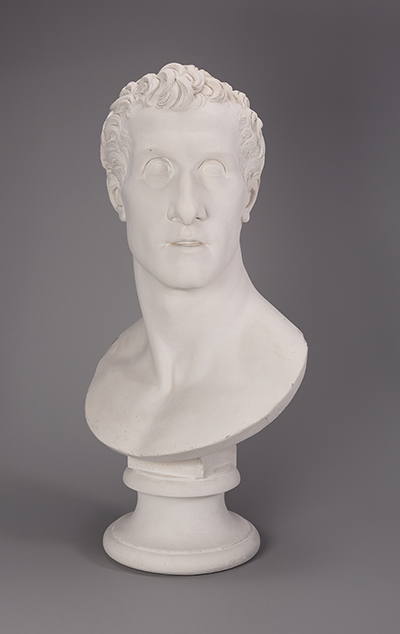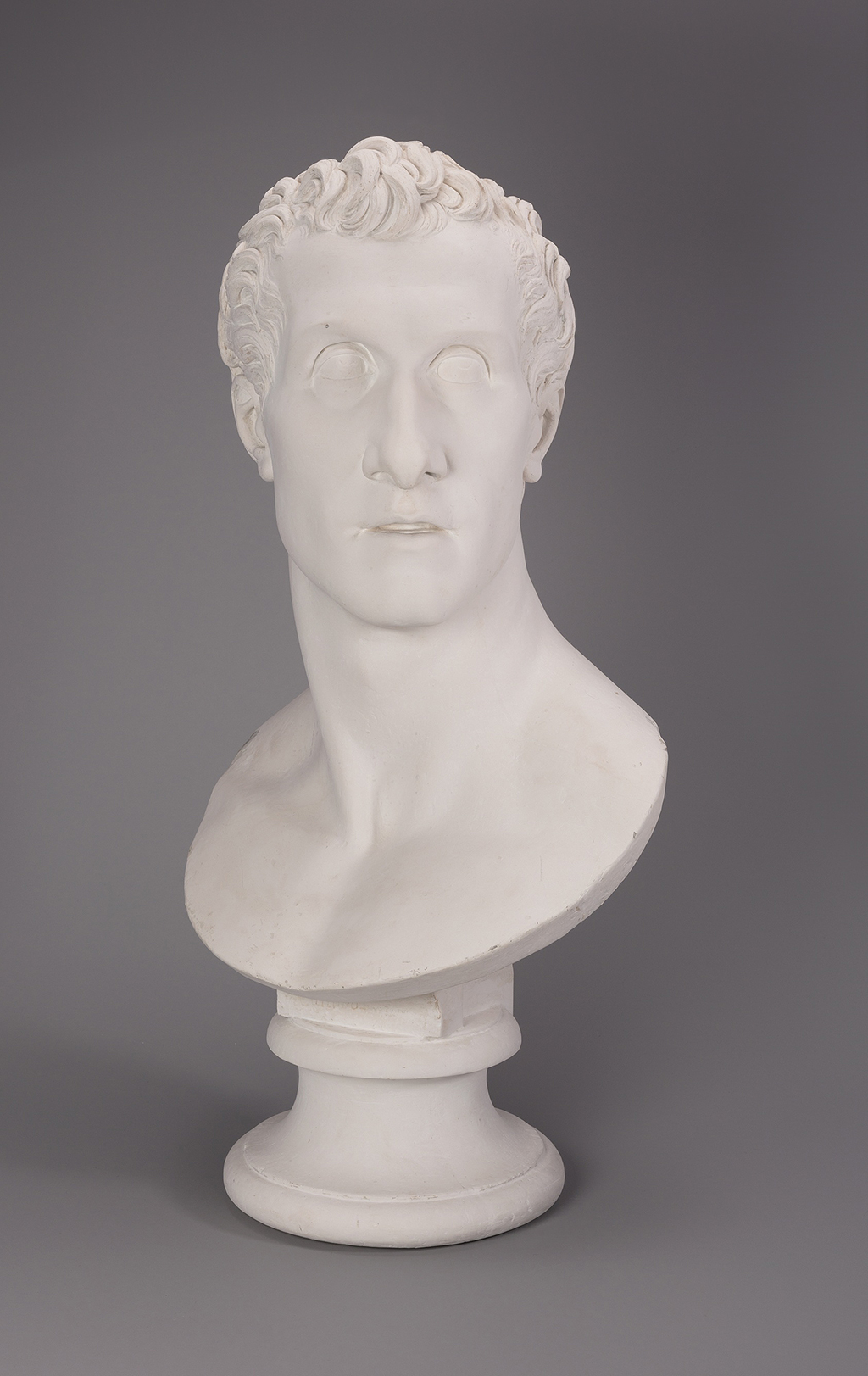This self portrait is attributed to the workshop of Antonio Canova, meaning it cannot conclusively be claimed to be from the master himself. It is dated at 1812 and is now on display at the Chicago Art Institute.
Antonio Canova worked for much of his career with the support of a large studio of assistants and fellow artists who were sufficiently skilled to help him out with a number of projects. This enabled the artist to take on more work than otherwise would have been possible and also afforded him the opportunity to also experiment with other mediums such as drawing and painting, in which he was also interested. We are not aware of any other self portrait sculptures from his career, making these designs particularly intriguing. One can glean much from seeing how an artist views themselves and this type of content can help them to reveal an awful lot about their own personality and emotional makeup. For the design in front of us, the eyes were left incomplete. It may have been that the master worked alongside others on this particular piece, perhaps sidetracked by other demands that took his attention elsewhere.
The original work on this sculpture was completed in around 1811/1812 and the plaster version can now be found at the Museum Gipsoteca Antonio Canova in Italy. The Chicago-based piece was then put together at around the same time and that is also made from plaster, making it unclear as to which came first and which is considered superior. There remain questionmarks over several items from the artist's career because of the crossover which occurred in most artist studios and the lack of documentation that was taken to record the involvement of each individual. This may not have seemed so significant at the time, but today it can greatily impact valuations and the way in which exhibitions are put together. Galleries and museums must be clear in promoting parts of their collection and not alter attributions in order to draw in more visitors. The Renaissance up to the early 18th century continues to have these issues hanging over it, though most of the confusion has been broadly answered by now, thanks to the use of considerable research and scientific advancements.
Within this sculpture it is perhaps the carefully crafted hair that stands out the most. The artist actually put together a detailed self portrait in oils several decades earlier, and so he was not shy by any means. That would have been more of a personal piece, where as this sculpture likely had a number of contributors, particularly once the original mould was completed. The masters would ensure that they had firm control over the main elements of each design, leaving the less significant parts to others so that their own reputations would not be risked or tainted by inconsistent or inferior contributions. Each studio would be different in how they worked, with some essentially serving as factories to generate income, as with the Bruegel family's in Northern Europe.





